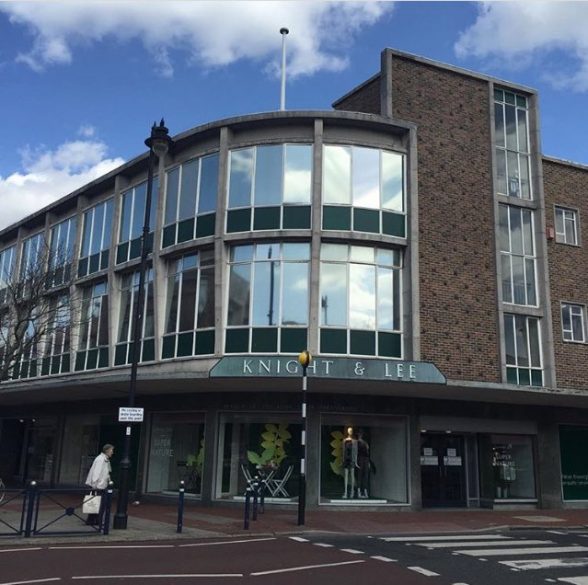This website uses cookies
This website uses cookies to enable it to function properly and to analyse how the website is used. Please click 'Close' to accept and continue using the website.



Deborah Sugg Ryan
As concerns mount over the increasing numbers of landmark department stores around the country which are being threatened with demolition or unsympathetic redesign, the Twentieth Century Society is delighted to announce a success story.
The Knight and Lee department store in Southsea, Portsmouth, has been listed at Grade II following C20’s application. A former John Lewis store, which closed two years ago, it is due to be converted into a cinema, hotel, gym, office and retail space. The listing dictates that any alterations carried out are sympathetic to the original design.
C20 Society’s caseworker Coco Whittaker said: “This is an outstanding 1950s building which survives in exceptionally good condition for a department store, with many of its primary fixtures and fittings still in place including Festival of Britain style decorations. We are delighted by the listing decision but are concerned that many other fine C20 department store buildings around the country are under threat in response to changing shopping habits and the pressure of the coronavirus pandemic.”
The C20 Society has taken action to try to safeguard eight other department stores of architectural merit including the House of Fraser (Rackhams) store in Birmingham, where it lost a fight to prevent the granting of a Certificate of Immunity which now paves the way for its demolition; the Grade II listed Rylands building in Manchester, where it is opposing proposals to replace most of the original windows; four Debenham stores in Taunton, Guildford, Leeds and Nuneaton; M & S in Oxford Street, London; and the Grade II listed Kendal Milne in Manchester.
A further 23 stores have been identified as at risk across the country including seven in the North West; six in the South; five in the South West; one in Wales and four in the East Midlands, although there are thought to be many more. C20 is appealing to the public to help as it compiles a gazetteer of all sites and looks at suitable alternative uses and design strategies which can keep the architectural qualities of the buildings intact.
Coco said: “If you know that your own local store is closing, and you think it’s a good building which we should be concerned about please email caseworker@c20society.org.uk, ideally with a photo and the full postal address.”
The Knight & Lee building, which is located between two conservation areas on a prominent corner of Palmerston Road and Clarendon Road in Southsea, Portsmouth, was designed by Cotton, Ballard and Blow. The practice became a major player in commercial and retail development after the war, designing Grosvenor House in Birmingham (1953-5),Grade II listed, and Campden Hill Towers in Notting Hill, London(1957-61).
The Knight & Lee construction was part of the partial redevelopment of the shopping centre of Southsea which suffered severe damage during the Second World War. The three-storey brick built building features striking windows with mirrored glass set in a concrete grid, as well as smaller more utilitarian square windows. Developer THAT group had stated in its application that the “single glazed windows may be replaced” and if this goes ahead it will now have to be carried out in a conservation led way.
Notable surviving original interior features include spiral staircases with terrazzo flooring in the northwestern and southwestern corner customer entrance vestibules; a central staircase; escalator; lifts; doors, light switches and electrical boxes; and radiators. Entrance vestibules on the western elevation are decorated with 1950s mosaics and terrazzo tiles.
Deborah Sugg Ryan, Professor of Design History and Theory at the University of Portsmouth, has said of the building: “This is an important example of postwar reconstruction of commercial premises following Portsmouth’s Blitz that shaped the Southsea shopping precinct […] the architecture is distinctive and the tiles & terrazzo are really good. It’s got a great open tread wooden staircase with interesting banisters. The finish and attention to detail is excellent throughout the building. The interior space is well realised. There’s also a brilliant escalator inside, which must be a rare survival of its type.”
Knight and Lee originated when two brothers in law from London, Jesse Knight and Herbert Soden, purchased a lace-making business in Southsea. They gradually expanded to own much of Palmerston Road, rebuilding and enlarging the shops between 1908 and 1910. Following their deaths, the business was acquired in 1934 by the John Lewis Partnership. The shops were destroyed by bombing during World War II and the company re-established itself in premises in Palmerston Arcade in the 1950s. The Knight & Lee building was said to be the smallest store in the John Lewis chain.

Become a C20 member today and help save our modern design heritage.